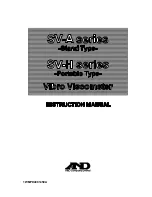
Measuring Chromatic Dispersion: Theory
Chromatic Dispersion Analyzer
91
Using Data Fits to Obtain Dispersion
As the previous table demonstrates, specific fits are recommended for
specific types of fiber and specific wavelength ranges. Fits should be used
carefully when extrapolating parameters to obtain maximum precision.
³
The 3-Term Sellmeier applies mostly to standard fibers with single zero
dispersion at 1300 nm.
³
The 5-Term Sellmeier has five zero crossings. Since it is extremely
elastic, it should be used with caution when extrapolating because the
fit may curve away from the true results beyond fitted points.
³
The same warning applies to the cubic fit.
³
The lambda-log-lambda fit is applicable to dispersion-shifted fibers
with a zero dispersion wavelength in the 1550 nm wavelength region.
³
The linear fit is useful when there are too few measurements for
multiple parameter fits to be used. It is applicable to all fibers if the
range is sufficiently small.
The fits will give you a tool to obtain the dispersion slope and zero-
dispersion point.
50/125
62.5/125
Non-zero dispersion-shifted
1530 nm-1565 nm
Fiber Type
and Wavelength Range
Expression for D
50nm
λ
1450nm
≤ ≤
τ λ
( )
A B
λ
2
C
λ
2
–
+
+
=
D
λ
( )
2 B
λ
C
λ
3
–
–
(
)
=
750nm
λ
1450nm
≤ ≤
τ λ
( )
A B
λ
2
C
λ
2
–
+
+
=
D
λ
( )
2 B
λ
C
λ
3
–
–
(
)
=
D
λ
( )
D 1565
(
)
D 1530
(
)
–
35
-------------------------------------------------
°
λ
1565
–
(
)
⋅
⎩
⎭
⎨
⎬
⎧
⎫
D 1565
(
)
+
=







































